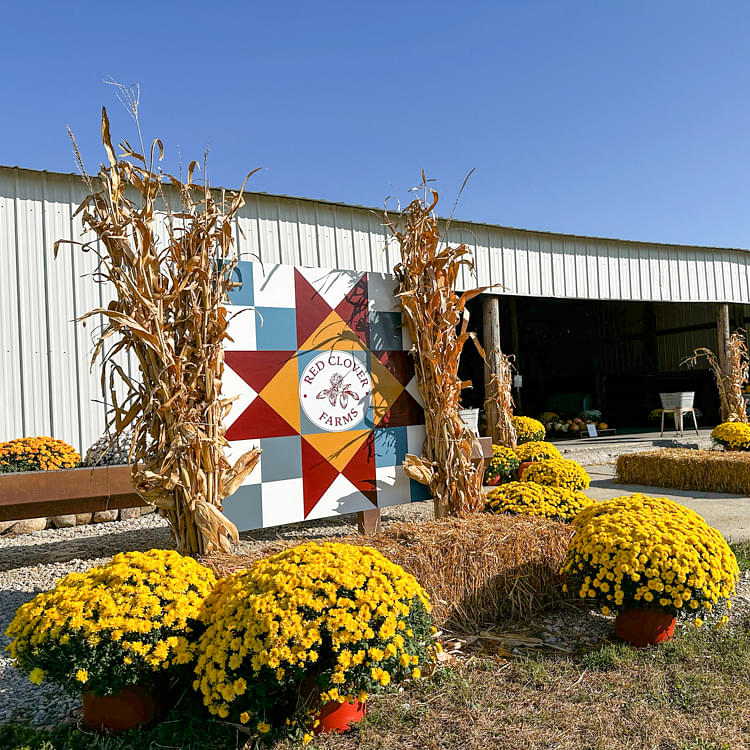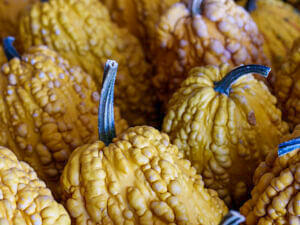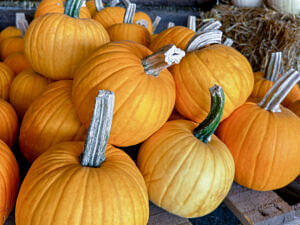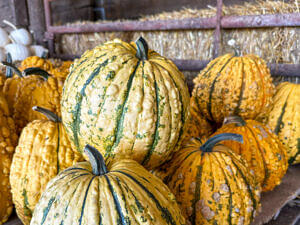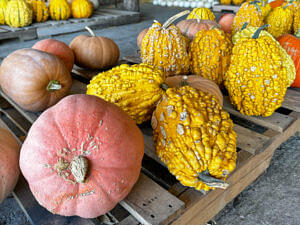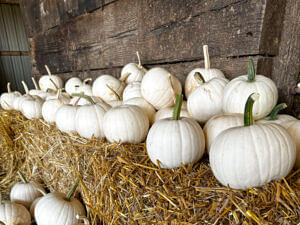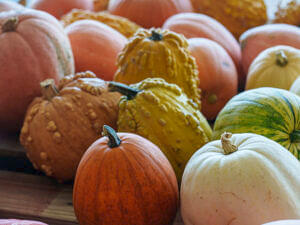HARVEST STORIES
Red Clover Farms: Thinking outside the box
Ryan Roossinck
October 25, 2024
We bumped into Ryan & Samantha Renaud, owners of Red Clover Farms in Alden, IA, at the Farm Progress Show a few weeks ago. During the course of conversation about how harvest was shaping up, rather than talk about getting the combine ready for soybeans, they surprised us by saying that they were just about ready to start pumpkin harvest!
Now, being out here in rowcrop country, we’re used to corn and soybean operations, but we don’t see pumpkin operations all that frequently. Sure, you see them on everybody’s front porch in the fall, but they don’t just magically appear at the grocery store or the farm market. So, Ryan & Sam invited us to come out to Red Clover Farms in Alden, IA and see how they raise a crop!
We love learning about the story of ag and the equipment used in it, so we jumped at the opportunity!
Sentimental gesture leads to business opportunity
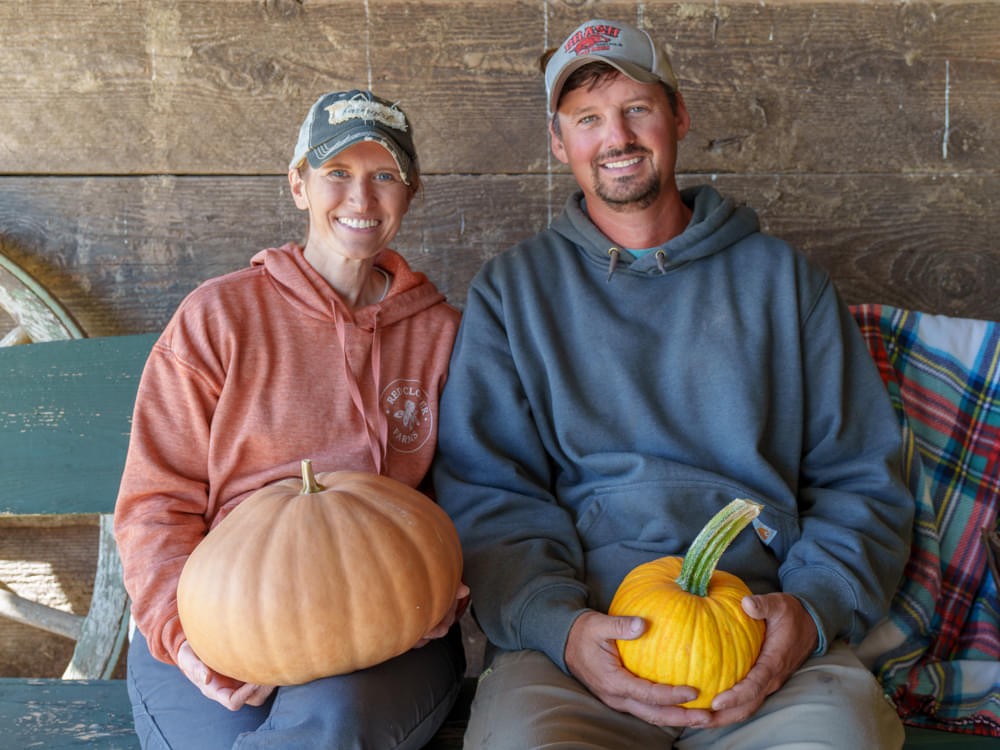
This whole idea got started shortly after Ryan & Sam married in late 2018. Pumpkins always reminded Sam of good times in Grandma’s kitchen at the family farmstead back in west-central Illinois. So, without telling her, Ryan planted eight pumpkin seeds in the backyard the following spring. Despite not bearing much fruit, Sam declared him “Husband of the Year.” And while it wasn’t initially intended to become a business, the seed was definitely planted.
In 2020, they decided to make a go of it as a business, and that’s how Red Clover Farms got its start! Sam does have a job in town, and Ryan is involved in a livestock operation as well, so this is a bit of a side project. For a lot of farmers, it’s a way of life; equipment, inputs, and the price of land have made it very difficult for young farmers to start a traditional row crop operation. Side projects help make ends meet.
They started small, but they’ve kept expanding over the past few years. Red Clover Farms isn’t a monster operation by any means – in 2024, they planted three acres – but it’s growing.
How do you plant a pumpkin patch?
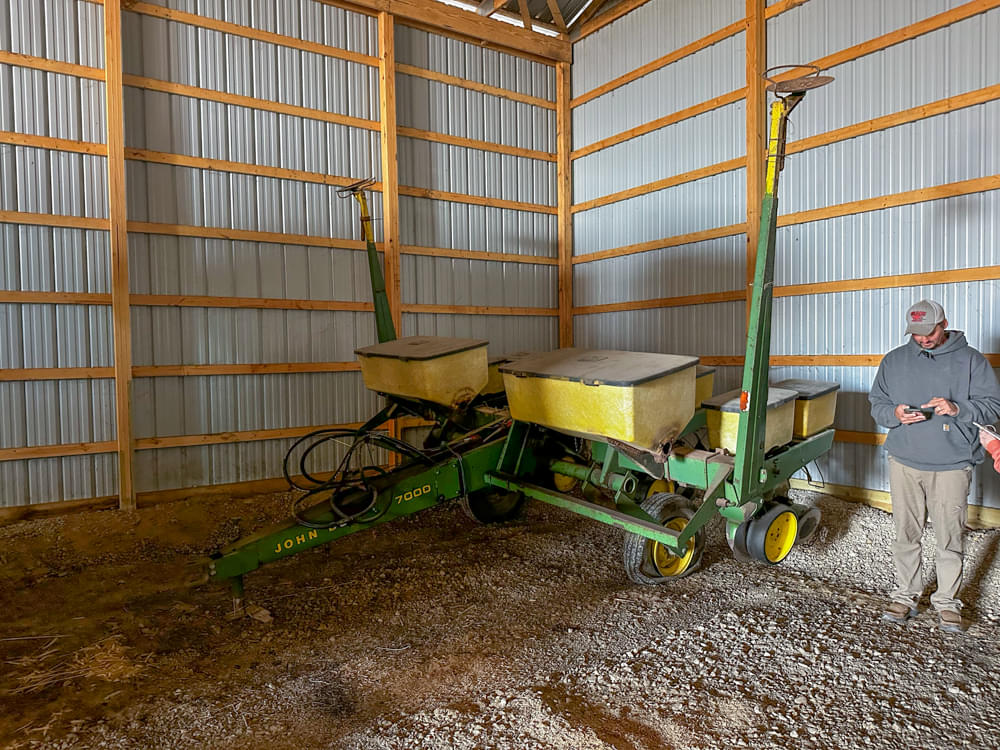
While some of the pumpkin seeds are planted by hand, many of them go through this planter (in this case, a John Deere 7000) When it’s time to plant, he removes the outer left seed box and replaces it with a PVC pipe feeding into the seed tube. In the field, Sam sits on the back box and drops a seed whenever she sees a white mark appear on the tire. Manual seed singulation works great, and the planter opens and closes rows as it would with corn or soybeans.
There are a few companies that build aftermarket pumpkin seed meters for the 7000. Red Clover Farms may eventually end up using them, too. However, for now, planting one row at a time with a trusty John Deere 4440 pulling the planter works just fine. It’s good bonding time between husband and wife, too!
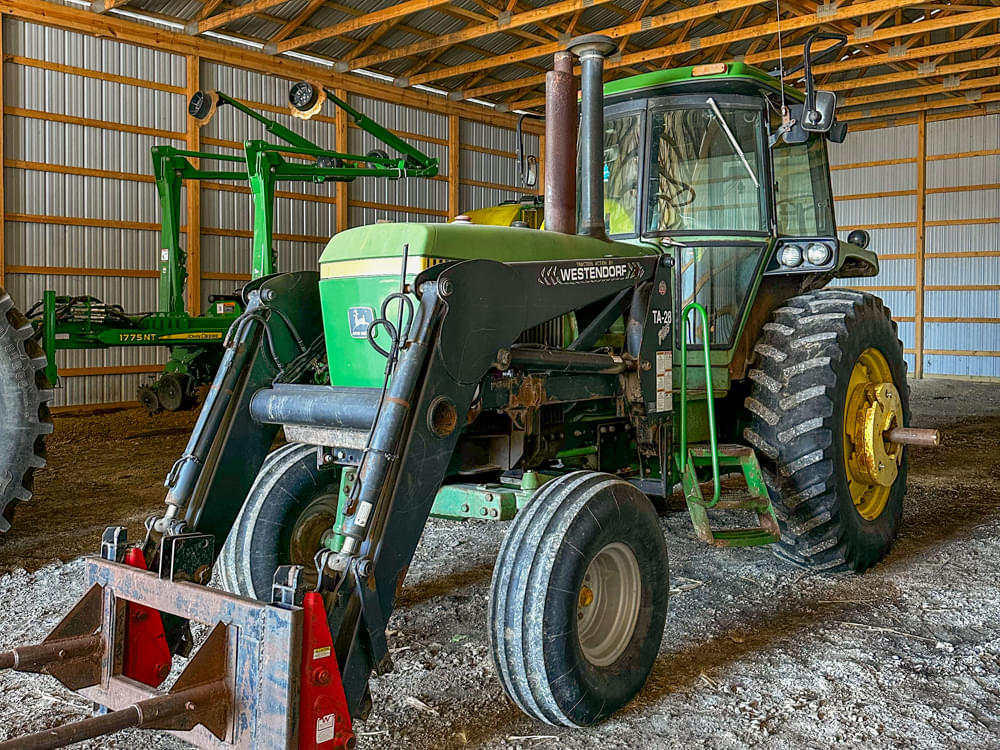
There’s more to it than just putting the seed in the ground, though. It takes a lot of thoughtful preparation and care during the growing season to make that seed grow into a pumpkin!
Challenges make the best teachers…
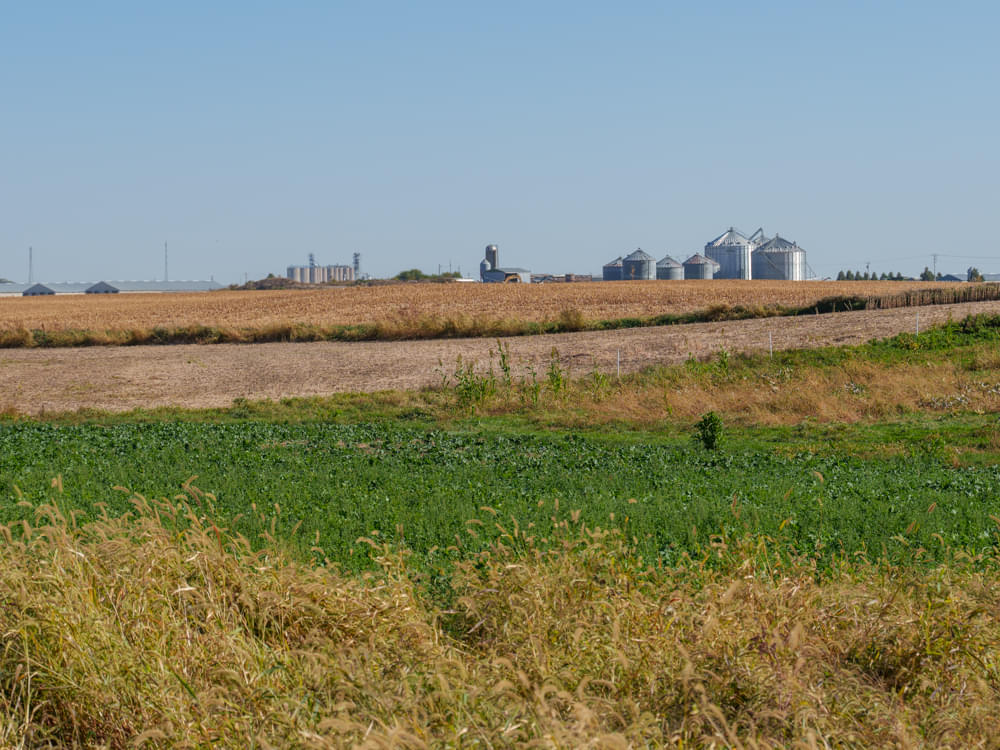
Raising a good crop of pumpkins isn’t easy…especially when you’re dedicated to sustainable agriculture and soil health. Cover crops are critical to continually improving soil health and keeping pests at bay, and they use them extensively. It also takes a near-perfect combination of good growing weather and moisture to allow the crop to use the nutrients in the soil.
Unfortunately, 2024 was a struggle.
“This has been our most challenging year all the way around,” Sam told us.
Many of the challenges stemmed from the virtually non-existent winter that Iowa had this past year. “Pests were horrible this year,” Ryan said, “flies and bugs – cucumber beetles were horrible this year. Vine borers were bad, too.” The ground never really froze, so the pests survived the winter better than normal…and by planting time, they were hungry.
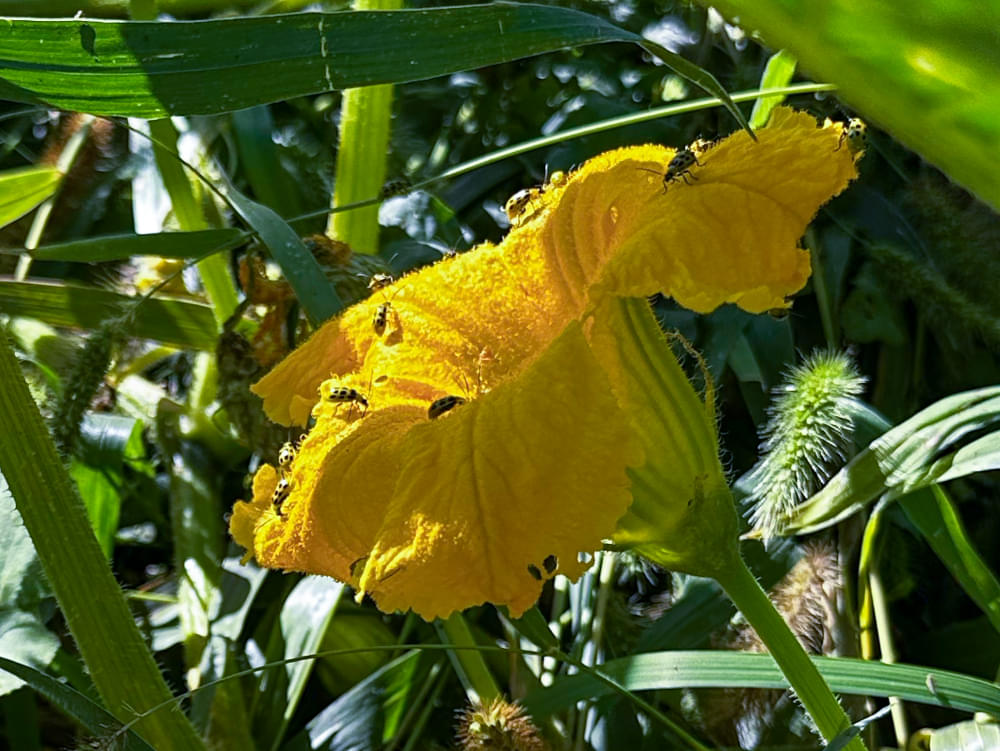
To make matters worse, after a very light winter, the spring brought flooding. At one point there was a pretty good sized river flowing through the pumpkin patch! Furthermore, late in the growing season, rain got pretty scarce and most of Iowa fell into a drought.
No, it hasn’t been an easy go this year. However, for Red Clover Farms, it’s all part of the learning process. Ryan and Sam both know there’s much more to learn from the failures than the wins, but they’re content to take it all in and apply it to next year!
Furthermore…it’s not like they didn’t raise any pumpkins…
Pumpkins for days…
When we visited Red Clover Farms, they had hundreds of beautiful pumpkins of all colors, shapes and sizes. Here are a few that we took photos of during our visit.
Despite only having three acres devoted to pumpkins, they plant a bunch of ’em! In any given year, they’ll plant close to 20 or more varieties of pumpkins planted at Red Clover Farms. They’ve got some favorites that they always plant for sure, but some varieties do better in Iowa’s climate than others. Along those same lines, some are more resistant to pests, and some are just new and interesting. Mixing it up helps them understand what works and what doesn’t – both for growing, as well as what sells well!
In this clip, we put Sam and Ryan on the spot to see if they could name off all the varieties of pumpkins grown at Red Clover Farms!
Why pumpkins?
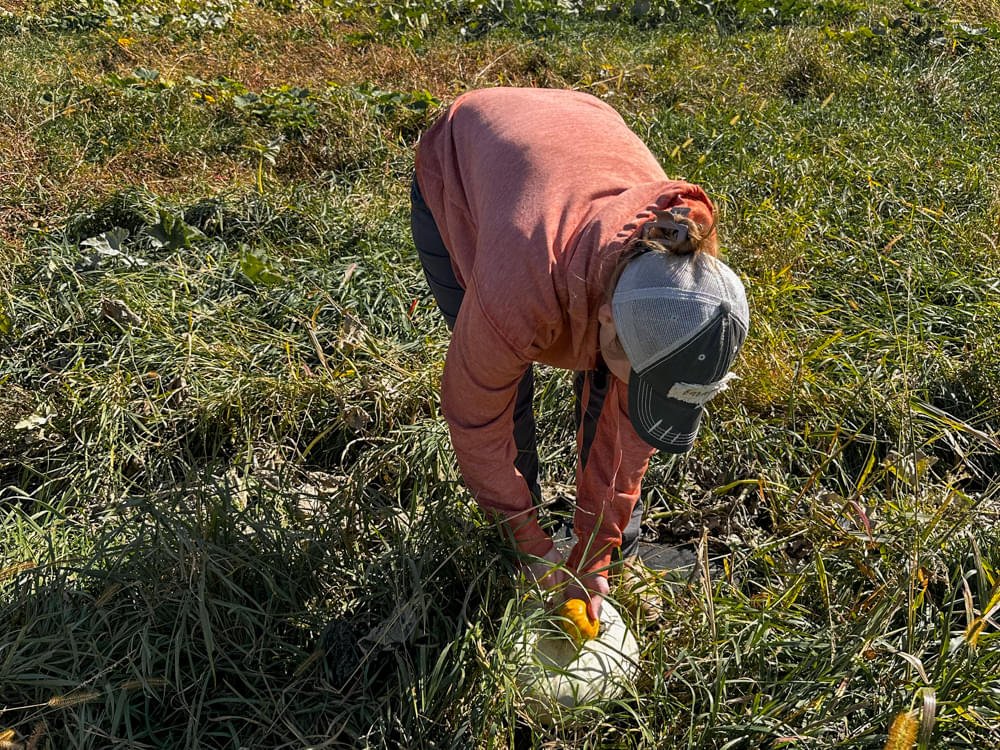
So why do they do it? There’s plenty of pumpkin farms in this country. Grocery stores, farm markets and big-box stores have to get pumpkins from somewhere. Aside from Sam’s childhood memories, though, there’s another reason – one with bigger (yet local) implications.
For Sam and Ryan, it’s a way to turn a side hustle into ag advocacy. Despite living in the country, there are still a lot of people who don’t realize how specialty crops like pumpkins fit into America’s agricultural landscape. Something as seemingly simple as a Saturday morning stop at Red Clover Farms to pick up pumpkins to carve or to decorate with has become an opportunity to get the next generation interested in stuff like soil health, regenerative ag, and supporting local farmers!
Farming isn’t always about equipment. Sure, Ryan and Sam spend some time with their 4440 hooked to that 7000 planter in the spring. However, there’s a lot of time and energy devoted to the handwork during the growing season – and definitely during the harvest. Growing pumpkins is pretty labor-intensive, and it’s not always pretty. Sam likes to say, “Sometimes farming is pretty messy.”
However, they both agree that it’s always an opportunity to show their customers another side of farming, and why it’s so important to the greater story of ag.

